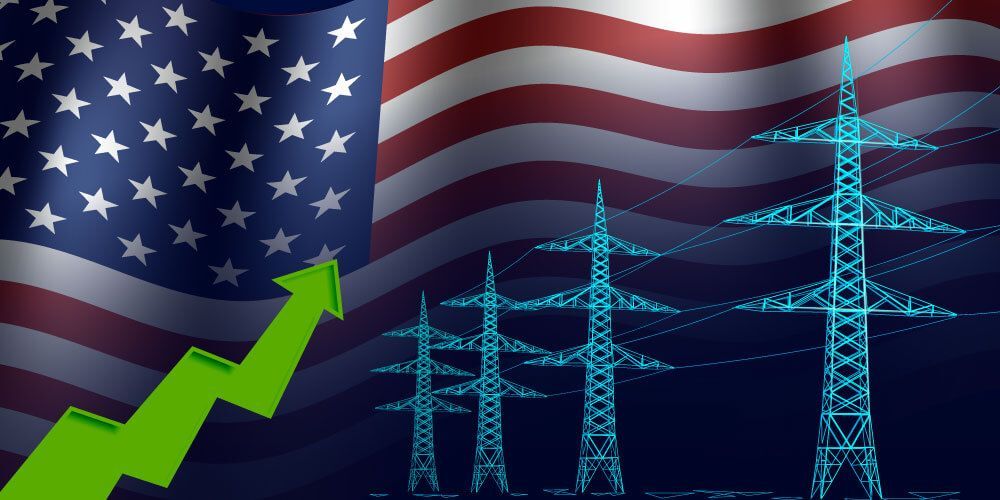Electricity is a big part of daily life in the United States and everywhere else in the world. However, the presence of deregulated energy markets in some states makes the situation in the U.S. truly unique. Households in each state use different amounts of electricity depending on various factors like the weather, the type of homes they live in, and what energy sources are available. By looking at how much electricity you use, you can figure out better ways to manage your energy, save money, and protect the environment.
Why is it so critical to understand average household electricity usage? Well, it helps the government and electricity companies make smart choices about how to provide energy to you at a reasonable price. It also helps them come up with plans to save energy and use more clean energy sources. But how does it benefit you as a consumer? Understanding these patterns can help you find ways to cut your own energy costs and reduce your impact on the environment.


Let’s take a closer look at how much electricity different states in the U.S. use. We'll see which states use the most and least electricity and try to understand why. What can we learn from states that use less energy? Are there tips and tricks that other states can adopt to become more energy efficient? Let's dive into these questions together and see how different states handle their energy use.
Reduce your average household energy consumption by switching your electricity provider
The Basics of Electricity Consumption
Household electricity consumption basically signifies how much electricity we use in our daily activities. Hence, it can include every form of energy consumption in your home from turning on lights to running your refrigerators. The first thing you need to understand about the average household energy consumption is that you measure it in kilowatt-hours (kWh). The kWh value indicates the power you use over a specific time (typically a month) to operate your household appliances.
For example, if you use a 100-watt light bulb for 10 hours, you consume 1 kilowatt-hour of electricity. But the thing is, we all use electricity differently based on our needs and habits. Some people might use more because they have bigger homes or live in places where they need air conditioning all the time. Others might use less because they have smaller spaces or use energy-saving appliances.
Understanding the average electricity consumption is critical for the consumer, just as much as it is for policymakers, electricity providers, and utility companies. For policymakers and people who make laws about energy, it helps them plan better. The policymakers and electricity companies can assess the average energy consumption data to determine where they might need more power plants or identify usage patterns.
When it comes to utility companies, this information helps them make sure there's enough power for everyone and keep the system running smoothly. They can also figure out pricing and find ways to encourage people to use less energy during peak times.
As energy consumers, knowing how much electricity you use can help to assess and optimize your energy consumption to cut down on utility bills. It can also make you more aware of your impact on the planet. By understanding your electricity consumption, you can make smarter choices that save money and help the environment.


Average Electricity Consumption Per Household Across U.S. States
As you can imagine, electricity consumption varies widely across the U.S., with each household showing different usage patterns based on a variety of factors. The latest data from 2024 shows that the average American household consumes about 877 kilowatt-hours (kWh) per month. However, this number can be misleading if we don’t look at the differences from state to state.
Some states see significantly higher consumption rates due to their climate and household size, while others manage to keep their numbers much lower. If you are keen on managing or reducing their utility expenses, these numbers are crucial. Furthermore, for those exploring alternative energy providers and plans, understanding these patterns will guide you to make informed decisions that align with your consumption habits and local availability.
State-by-state Energy Consumption Comparison
When you break down the numbers state by state, a fascinating trend emerges. According to the data from 2022, rates in the southern regions, such as Texas and Florida, have higher electricity consumption. This trend is largely due to the high air conditioning requirements during long, hot summers.
On the other hand, states in the Pacific Northwest, like Oregon and Washington, have lower consumption due to milder climates and smaller average household sizes. However, it is also worth noting that even though Texas has the highest consumption, energy deregulation in the state also allows energy consumers to get cheaper tariffs.
Moreover, this comparison is not just about numbers. It's about understanding how your own state's energy consumption affects you. Are you living in a high-consumption state? If so, this might be the time to consider how you can cut down on your electricity use.
You can use our advanced search and compare tools to find the best electricity providers and plans in your city or filter them by ZIP code. Energy pricing offers you the best electricity deals from all over the U.S. so you can minimize your utility expenses by choosing the right provider and plan for your household.
Or perhaps it's worth checking into solar energy or other renewable energy sources available in your area. The following comparison table gives you a comprehensive idea of the electricity consumption patterns in all major U.S. cities.
| State | Consumption(in Terawatt-hours) | Notes |
|---|---|---|
| Texas | 475.4 | Highest overall consumption |
| California | 251.9 | High consumption, but less than Texas |
| Florida | 248.8 | Similar to California, very high consumption |
| Ohio | 149.5 | Middle range in consumption |
| Pennsylvania | 145 | Comparable to Ohio |
| Georgia | 145 | On par with Pennsylvania and Ohio |
| New York | 143.2 | Slightly less than PA and GA |
| North Carolina | 139.2 | Moderate consumption |
| Illinois | 135.9 | Moderate, similar to NC |
| Virginia | 132.3 | Lower end of moderate consumption |
| Tennessee | 102.1 | Lower consumption compared to VA |
| Michigan | 100.6 | Around the national average |
| Indiana | 100 | National average benchmark |
| Louisiana | 95.1 | Below average consumption |
| Washington | 90.9 | Lowest among the listed states |
States with Highest and Lowest Electricity Consumption
According to the data from Statista, Rhode Island reports the lowest electricity consumption per capita, while Texas has the highest energy consumption. The differences are influenced by several factors, including weather conditions, type of housing, and the prevalence of energy-efficient appliances and practices.
For residents in high-consumption states, the data serves as a wake-up call to explore energy-saving options. This might include upgrading to more efficient appliances, installing better insulation, or even switching to a different energy plan that offers better rates or more green energy sources.
Browse for the best electricity plans in your ZIP code
Conversely, those in states with low consumption are doing something right, but there’s always room for improvement. Staying informed on the latest in energy-efficient plans using Energy Pricing’s advanced search and compare tools can help maintain or even lower those figures.
Understanding these specifics helps not just in managing costs but also in planning for future energy needs or changes. Whether you're in a state with high or low electricity consumption, there are always steps you can take to optimize your energy usage and potentially reduce your bills.
Regional Patterns and Trends in Electricity Consumption
Understanding how different regions in the U.S. consume electricity can give us insights into why some areas have higher average household electricity usage and how you can manage energy costs better. Let's briefly discuss the regional trends and factors affecting electricity use across the country.
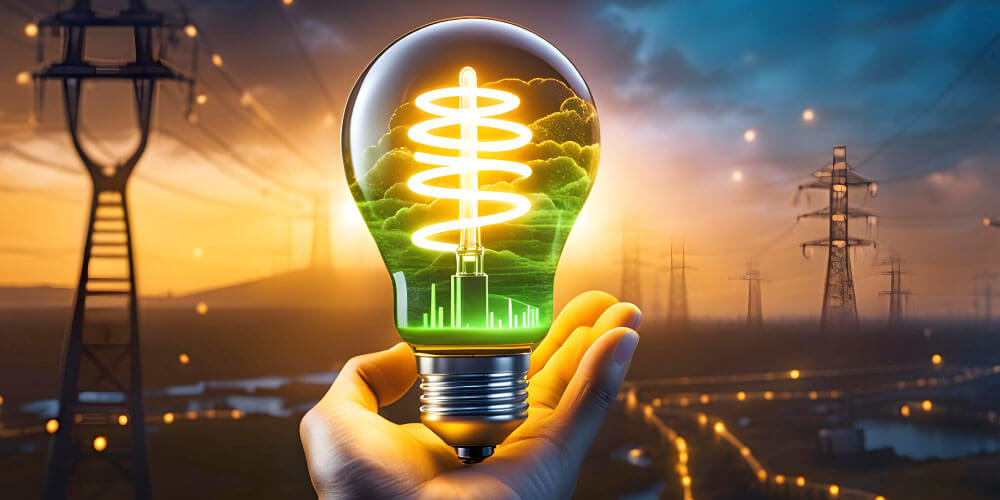

How Does Electricity Consumption Vary Across the U.S.?
Electricity consumption varies widely across the U.S. due to several factors like climate, population density, and the availability of energy resources. For instance, southern states often have higher electricity usage due to the need for air conditioning during long, hot summers.
On the other hand, states in the Pacific Northwest might use less electricity but more energy overall due to heavy reliance on heating fuels during cold winters. By understanding these regional differences, you can start to see patterns that help explain why your electricity bills might look different from someone's in another state.
Comparing Electricity Consumption of States Within the Same Region
Even within the same geographic region, states can show different patterns in how much electricity they consume. For example, in the Northeast, New York often shows lower household electricity consumption compared to its neighbor Pennsylvania.
This could be due to New York’s higher adoption of energy-efficient appliances and city planning that reduces dependency on electric heating. In contrast, Texas and Louisiana in the South show high electricity consumption, driven by high temperatures and larger home sizes that require more cooling.
Impact of Climate and Economic Development
It is clear that the climate significantly influences regional electricity consumption. States with extreme temperatures, either hot or cold, tend to use more electricity for heating and cooling. Economic factors also play a role. However, climate is not the only element to consider when determining the average house power consumption.
Areas with more industrial activities consume more power, Besides that, regions with higher income levels might afford more appliances and larger homes, increasing electricity use. Moreover, states that invest in renewable energy sources like solar and wind may see different consumption patterns as these technologies become more integrated into their energy grids.
Factors Influencing Household Electricity Consumption
Understanding what factors affect your home's electricity consumption is key to managing and reducing your energy bills. Above, we talked about various factors affecting average household electricity consumption in various states and regions.
Here, we'll explore various factors that influence how much electricity you use and provide practical tips for optimizing your consumption. If you want to have a better understanding of your electricity bills and switch providers for further optimizations, you should pay special attention to what we have to say next.
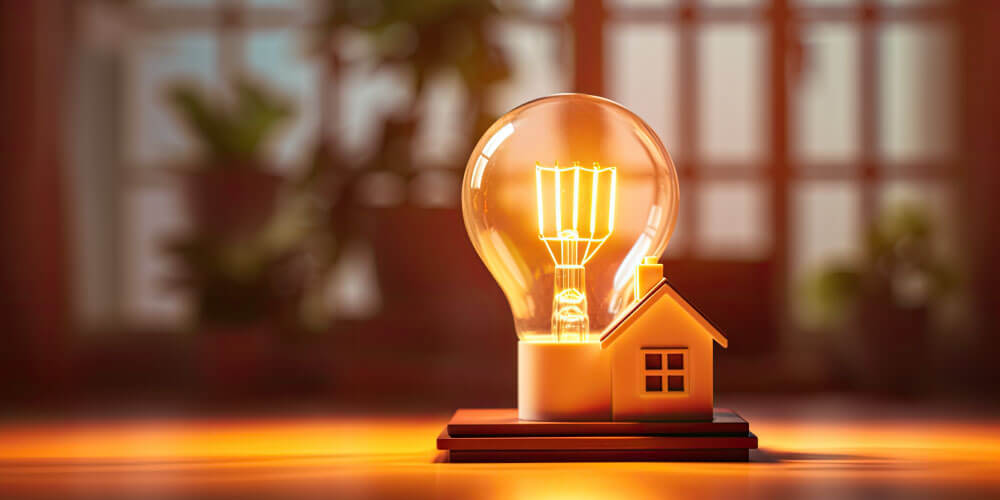

Household Size and Layout
The size of your home and the number of occupants play a significant role in electricity usage. Larger homes require more energy for heating and cooling. That’s not all. Having more people in a household typically means more appliances and devices in use., ultimately increasing average electricity use per month.
Consider zoning your heating and cooling systems and using smart thermostats that adjust temperatures based on room usage. It can significantly cut down on unnecessary energy consumption in unoccupied spaces.
Appliance and Electronic Usage
The type and age of your appliances can significantly impact your electricity consumption. Older electronic appliances tend to be less energy-efficient, and the cumulative effect of multiple devices can add up to high energy bills.
Consider upgrading to Energy Star-certified appliances to enhance efficiency. Also, try to unplug devices when not in use, as many continue to draw power even when turned off. It is crucial that you understand how electricity bills work to learn the effect of power-hungry electric appliances on your energy bills.
Heating and Cooling Needs
Heating and cooling can account for nearly half of a typical home's energy usage. In other words, it is the largest energy expense for most households, especially in regions with extreme temperatures. If you live in such a geographic region, you must pay special attention to your HVAC system and its overall efficiency.
Regular maintenance of your HVAC system and sealing leaks in windows and doors can improve energy efficiency. We also advise using programmable thermostats to reduce heating and cooling costs by adjusting the settings when you are asleep or away from home.
Weather and Climate
Weather conditions and climate significantly affect the average electricity consumption, especially in areas experiencing extreme temperatures. Homes in colder climates tend to use more energy for heating, while those in warmer climates use more for cooling.
You can enhance your home's insulation to maintain a comfortable indoor temperature without excessive power usage. Use energy-efficient windows and blackout curtains to keep heat in during winter and out during summer.
Energy Consumption Habits
Your daily habits, such as the hours you spend at home, the lighting you use, and how high or low you set your thermostat, all impact your electricity usage. Moreover, using multiple energy-hungry devices during peak demand time can also impact the average house power consumption.
Adjust your daily habits to use less energy, especially during peak demand hours. Besides that, you can consider switching to LED lighting, using smart power strips, and being mindful of peak energy rates. Implementing timers or smart home systems can also help to better control your energy usage.
Time of Use
Electricity costs can vary significantly depending on the time of day you use it, with peak hours typically being the most expensive. Many utility companies offer time-of-use rates to encourage off-peak consumption that can significantly help you save on your utility expenses. Shifting your household high-power activities like laundry or dishwashing to off-peak times is the best way to save money on utility bills if you have a time-of-use plan.
Alternative Energy Options and Electricity Plans
The source of your electricity, whether renewable or not, can affect both your costs and your carbon footprint. Many households are now considering alternative sources like solar power. If you are hesitant about their reliability you can also consider switching your electricity providers. Learning how to switch electricity providers in 2024 can lead to significant savings.
If feasible, invest in solar panels or subscribe to green energy programs from your electricity provider. It not only reduces dependency on non-renewable resources but can also provide long-term savings on electricity bills.
Find the best electricity providers and their plans in your area
Policy Implications and Recommendations to Promote Energy Efficiency
By now, you should know that household electricity consumption is not just about reducing bills. It's also about promoting broader energy efficiency. Policy interventions can play a significant role in guiding both consumers and providers toward more sustainable energy use. Here are some key areas where policy can make a difference, aiming to both reduce electricity consumption and encourage energy-efficient practices.
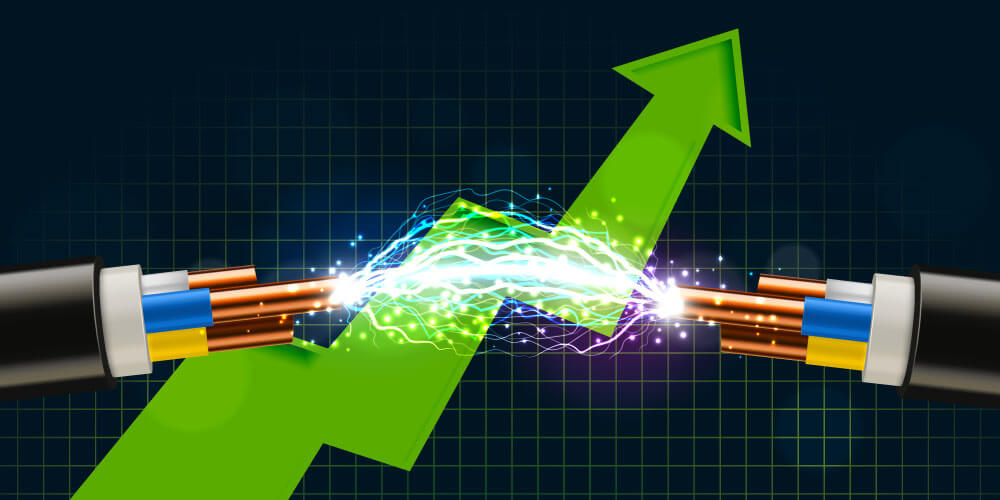

Incentives for Energy-efficient Appliances
Governments can offer incentives like rebates or tax credits to encourage consumers to purchase energy-efficient appliances. These incentives make it financially attractive for households to upgrade old, inefficient appliances to newer, energy-saving models.
If you're considering new appliances, look for government incentive programs in your area. These can substantially lower the cost of energy-efficient upgrades, making them a smarter investment that pays off in the long run through reduced energy bills.
Building Codes and Energy Standards
Updating building codes to require or encourage energy-efficient construction can dramatically reduce the energy consumption of new homes and buildings. Similarly, setting higher energy standards for appliances and systems ensures that all available products contribute to energy savings.
As a consumer, you can support local and national policies that advocate for stricter energy standards and building codes. When building or renovating, consider going beyond the minimum standards to ensure energy efficiency and future savings.
Promotion of Renewable Energy
Policies that support the development and integration of renewable energy sources, like solar and wind, can reduce reliance on fossil fuels and decrease average household energy consumption. It can be through subsidies for renewable energy installations or mandates for a certain percentage of energy to be sourced from renewable technologies.
Hence, you must explore options for participating in renewable energy programs offered by your utility provider. It is also worth noting that many companies offer the ability to buy a "green" energy package or contribute to funding renewable energy projects.
Educational Programs and Public Awareness
Educating the public about the importance of energy efficiency and how to achieve it is crucial. Government and utility-led initiatives can include workshops, online resources, and school programs that teach energy conservation techniques.
Take advantage of local workshops and online resources to learn more about how you can reduce your average household electricity usage. Awareness is the first step towards action, and informed consumers are more likely to make changes that have a lasting impact.
Future Trends and Challenges in Household Electricity Consumption
As we look ahead, understanding the future trends in household electricity consumption is necessary for preparing and adapting to upcoming changes. By analyzing current patterns and anticipating new developments, we can better manage our energy usage and its impacts.
For example, consider the electricity rates in Texas cities like Houston and Dallas. While both cities are in the same state and have access to pretty much the same providers and plans, the consumption pattern still varies across them. We can attribute such variations to factors such as differing local regulations, economic conditions, and climate.
Furthermore, tracking electricity rates in Houston and analyzing shifts in these rates can provide insights into broader consumption trends within the region. Similarly, monitoring how electricity rates in Dallas respond to seasonal changes or policy changes helps us understand the dynamic nature of energy management.
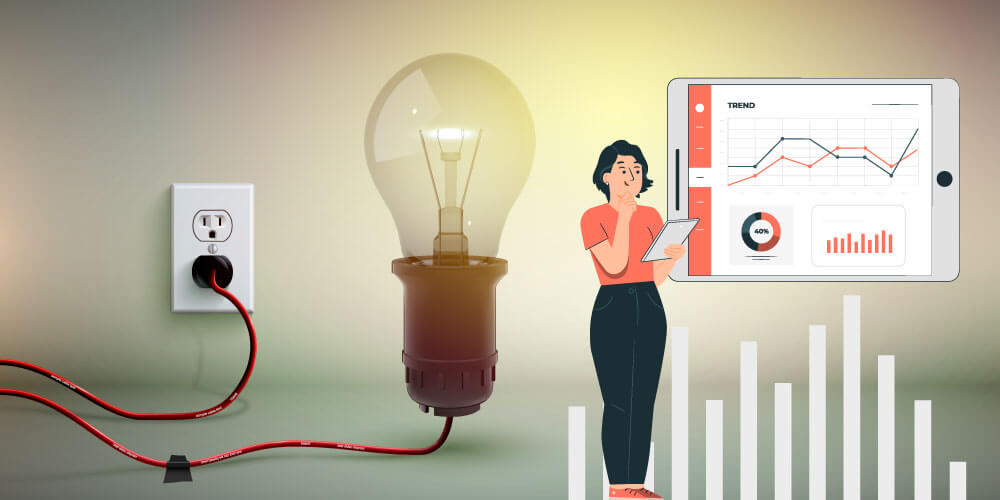

Predicting Future Trends
Based on current patterns and emerging technologies, the average household electricity consumption is likely to become more efficient. However, there could be an increase in the overall demand due to various reasons, such as the rise of electric vehicles (EVs).
As more homes incorporate smart technology and IoT (Internet of Things) devices, the way we use and manage electricity will evolve. The best thing you can do is to embrace smart home technologies and consider their benefits for energy management.
Challenges and Opportunities for the Future
The journey towards energy efficiency is not without its challenges. Evolving technologies, the impacts of climate change, and shifting consumer behaviors all present many hurdles. For instance, as temperatures rise globally, the demand for cooling systems increases, potentially straining energy supplies during peak times.
New technologies also offer numerous opportunities to reduce the average electricity consumption not just in the U.S. but for the whole world. For instance, advancements in solar panel technology and battery storage are making renewable energy more accessible and effective for individual households.
Mitigating Environmental Impact
One of the most pressing concerns is the environmental impact of increasing electricity consumption. As demand grows, so does the need for strategies that not only meet this demand but do so sustainably. Enhancing energy efficiency in homes remains key to solving the problem of rising average household energy consumption.
Investing in renewable energy solutions, like solar panels or community renewable projects, can significantly reduce a household's carbon footprint. Additionally, advocating for and participating in energy efficiency programs offered by local utilities or governments can support broader efforts to reduce energy consumption.
Find a personalized energy plan for your household and minimize your utility expenses
Key Findings
Throughout this blog, we've explored how different factors, ranging from household size to regional climate, significantly influence electricity consumption in U.S. households. We've identified that states with extreme weather conditions tend to have higher electricity usage, and technological advancements like smart home systems can help manage and reduce this consumption.


Additionally, the importance of choosing the right energy providers and understanding one's own consumption patterns has been highlighted, offering pathways to cost savings and efficiency improvements. Understanding these electricity consumption patterns is crucial for sustainable energy management. As we've seen, knowing how much energy we use and why can lead us to make smarter decisions that benefit both our wallets and the planet.
It's not just about using less energy, but using it more wisely. By staying informed and proactive, households can significantly contribute to a more sustainable future, ensuring that energy is used efficiently and responsibly while still meeting our daily needs.
Average Electricity Consumption Per Household: FAQs
What is the average electricity consumption per household in the U.S.?
On average, a U.S. household consumes about 877 kilowatt-hours (kWh) each month, but this can differ widely depending on the state. This variation reflects the different living conditions, energy sources, and household behaviors across the country. Knowing the average helps households compare their own usage and identify areas where they can cut back.
Why does electricity consumption vary between states?
Several factors cause variations in the average electricity consumption across states. Climate is a major factor as states with hotter climates often have higher usage due to air conditioning needs. Other factors include differences in housing types, energy efficiency initiatives at the state level, and economic activities that may require more energy consumption.
How can understanding electricity consumption patterns help me save money?
You can pinpoint areas where you might be using more electricity than necessary by understanding your own and general electricity consumption patterns. It might lead you to make changes such as timing your electricity use to off-peak hours, upgrading to more efficient appliances, or adjusting your home HVAC system, to reduce your electricity bills.
What are some effective ways to reduce my household’s electricity consumption?
Effective strategies to reduce your average electricity consumption include using energy-efficient appliances, improving insulation to reduce heating and cooling needs, and installing smart home systems to better manage energy use. Additionally, adopting habits like turning off lights when not needed can also make a significant difference.
How does climate affect household electricity consumption?
Climate impacts how much electricity households use primarily through heating in winter and cooling in summer. In areas with extreme temperatures, more energy is used to maintain comfortable indoor environments, leading to higher electricity consumption. Hence, climate plays a significant role in determining your average electricity consumption.
What role do energy-efficient appliances play in reducing electricity consumption?
Energy-efficient appliances are designed to use less electricity to perform the same tasks as traditional appliances. By consuming less energy, these appliances help reduce your household's overall electricity usage, which not only lowers your energy bills but also reduces your carbon footprint. Furthermore, these devices deliver optimized performance.
Can switching electricity providers save me money?
In deregulated markets like Texas, switching electricity providers can lead to cost savings. Furthermore, the advanced tool from Energy Pricing can help you find a provider that offers lower rates or more favorable terms based on your consumption patterns. Comparing different plans can help you find the best deal if you have high electricity usage.
What are time-of-use rates and how can they affect my electricity bill?
Time-of-use rates are pricing schemes where electricity costs more during high-demand hours and less during low-demand periods. By understanding these rates and shifting your electricity use to cheaper, off-peak hours, you can manage your costs more effectively. It effectively results in lower average household electricity usage and utility expenses.
Does household size affect electricity consumption?
Generally, larger households with more members use more electricity due to increased use of electricity. Whether it is lighting, heating, cooling, and appliances, a larger family requires larger electricity. Larger homes themselves also require more energy to heat and cool efficiently making mindful usage and energy-efficient practices crucial.
What is the impact of electric vehicles (EVs) on household electricity consumption?
The adoption of electric vehicles significantly increases the average household electricity usage due to the need for regular charging. Planning for this increase is important, and can include upgrading your home's electrical system or considering energy management systems to handle the additional load. You can also consider renewable energy options.

